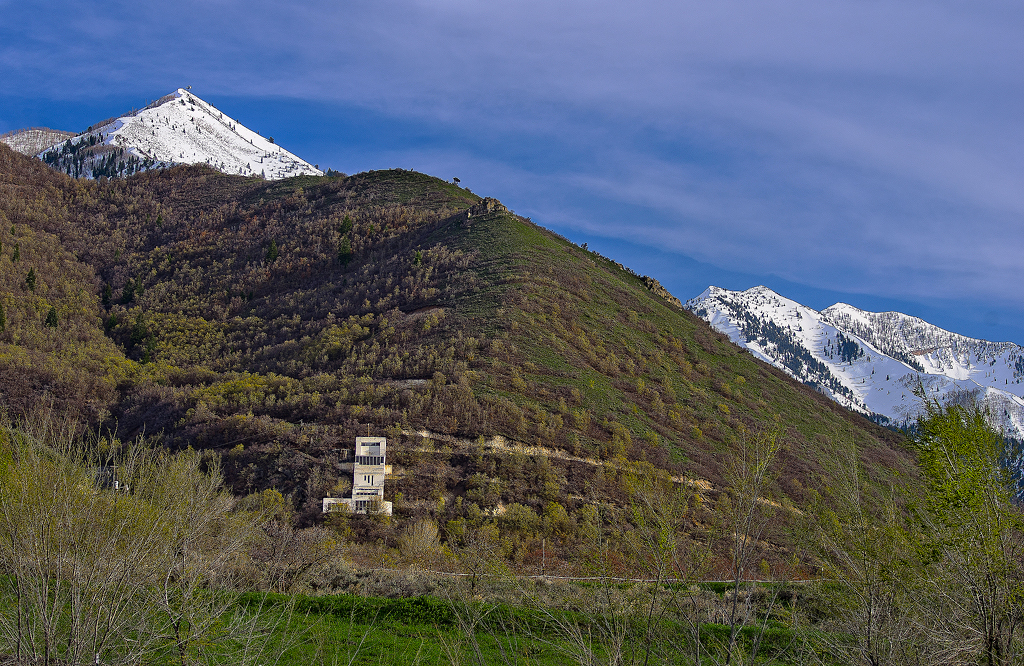On the foothills of Wasatch Mountains, east of Salem, in the US state of Utah, is a mine waiting for a miracle.
The mine was first excavated in 1894, and in the 125 years of its existence, it has produced not even the tiniest nugget of gold. Its seven thousand plus stockholders and supporters are hopeful. They believe that when the time is right, the mine will yield untold amount of gold and treasures enough to see the believers through the worst of times.

The Dream Mine's ore processing mill. Image credit: Daily Herald
The story of the “Dream Mine” starts with John Koyle, a modest, stooped, soft-spoken dirt farmer, and a member of the Church of Jesus Christ of Latter-day Saints. While serving as a missionary for the church in the southern states, Koyle earned a reputation of being a clairvoyant. One day he dreamed of two missionaries chased to his house by a mob. The frightened missionaries urged Koyle to join him in fleeing the hostile town, but Koyle insisted in staying. When the agitated mob reached the house, the landlord stopped them at the door and a woman scolded and lectured the mob until they went away. Koyle claimed he was jolted awake from the dream by furious pounding on the door. The events that followed was an exact replica of his dream—two missionaries had come running to Koyle chased by a mob, Koyle gave them shelter, then the landlord blocked the mob’s approach and a woman turned them away. Another time, while touring some mines in the Mercur and Tintic mining districts, Koyle dreamed of a huge body of rich ore to one side of where the men were digging. Such a body of ore was reportedly discovered some time later, strengthening Koyle’s belief on his own prophetic gifts.
A few years later, in 1894, Koyle’s dreams escalated into visions. He said he was visited by a heavenly messenger, who took Koyle to the nearby mountains and showed him nine caverns full of treasures buried by the ancient Nephites civilization. The angel told him to dig tunnels into the mountain, and that the treasures would provide financial aid during an economic collapse leading up to the Second Coming of Jesus. Koyle claimed that the angel told him about a seven-year drought and famine, during which society will collapse and Utah’s great copper mines and steel mills would close.
Shortly after the vision, Koyle and five of his friends started excavating the place on the mountain which he had seen in his dream. At one point, Koyle almost abandoned his quest, but when his chickens started dying and his children fell sick, Koyle’s wife urged him to restart digging. To raise money for the construction of the mine, Koyle formed the Koyle Mining Company and stocks were issued. Believing Mormons paid Koyle $1.50 a share for a piece of his dream. Young men who came to work for the mines received stocks instead of wages for their labor. Some people sold their farms and houses to buy stock. Others took out loans from the bank.
The LDS Church was skeptic of Koyle’s venture and advised Mormons not to invest their hard-earned money into speculative endeavors. One Mormon geologist examined some ore from the Dream Mine and reported to the church that it was worthless. Not surprisingly, Kolye had another vision where the angels warned that the Dream Mine would face “false rumors” and experience opposition from leaders of the LDS Church.
Despite conflicts with the church, workers dug miles after miles of tunnel by hand. Whenever funds got low, something positive would occur and stock prices would sore again, like that one time when water was discovered at the exact depth Koyle prophesized.
Image credit: Lee Nelson/Utah Holiday
Koyle died in 1949. His followers continued boring into the mountain until the 1960s when excavators encountered an immovable capstone. Work on the mine became too costly to continue, and mining stopped. Today, the Relief Mine Co. looks after the day-to-day operations of the mine, most of which have little to do with mining. The company’s revenues come from fruit sales from an orchard it runs, from a rental home and from a gravel pit. Real estate, peaches and gravel may not be as good as gold, but they are profitable enough to keep investors interested. According to 2008 article, the Relief Mine had over $5 million in assets, including 800 acres of real estate, 2,000 fruit-bearing trees, five homes, a big warehouse, mining equipment, and a sand and gravel pit.
The Relief Mine Co. had issued nearly 700,000 shares of stock till now, but nobody knows how many have been tucked away in attics, or sold to memorabilia collectors or thrown out by disbelieving descendants. The company has around 150,000 active shares held by 7,500 stockholders, as of 2018.














Comments
Post a Comment